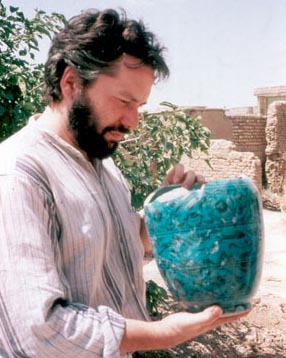
Robert B. Mason
Dr. Robert Mason is an archaeologist, anthropologist, art-historian, geologist, and materials scientist whose experience and research has included study of the the art, technology, trade, and industry from the beginnings of time to the industrial revolution around the world. A particular area of specialisation is the material culture and archaeology of the Middle East and Europe during the Islamic and Mediaeval periods (roughly 500 AD to the present).
Dr. Mason's archaeological fieldwork has been based in Syria since 1998, particularly in the citadel of Aleppo, and since 2004 at the monastery of St. Moses (Deir Mar Musa). The monastery, 90 km north of Damascus in the mountainous Syrian desert, is the focus of Dr. Mason's survey of the site and its environs, recording features possibly as early as the Neoloithic. Research at the monastery has led to a growing research interest in the archaeology of Christianity and monotheism generally in the Holy Land.
Ceramics and vitreous materials are Mason's primary area of analytical research, particularly the high-technology glazed ceramics made in the Middle East between c. 650 and 1700 AD. Dr. Mason is in particular an authority in the application of petrographic analysis, a geological technique used to identify minerals, which is used to identify where the pottery was made.
Robert Mason is also responsible for the ROM's collections database and provision of cataloguing for the Egyptian, Far Eastern, Textiles, Greek & Roman, and West Asian sections of the Department of World Cultures. Mason is appointed as an Associate Professor with the Near and Middle Eastern Civilizations Department at the University of Toronto.
Ch. 1 Introduction and objectives 1
Ch. 2 Methodology 5
Ch. 3 Iraq c. 700-1100 23
Ch. 4 Egypt c. 700-1200 61
Ch. 5 Syria c. 700-1250 91
Ch. 6 Iran c. 700-1340 121
Ch. 7 Pottery and History 156
Ch. 8 Conclusion 169
App. A Catalogue of objects studied 183
App. B Catalogue of petrofabrics 200
App. C Archaeological sites and their pottery 219
Plates
Bibliography